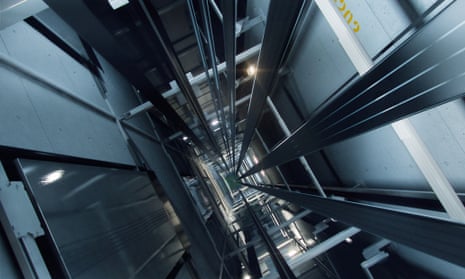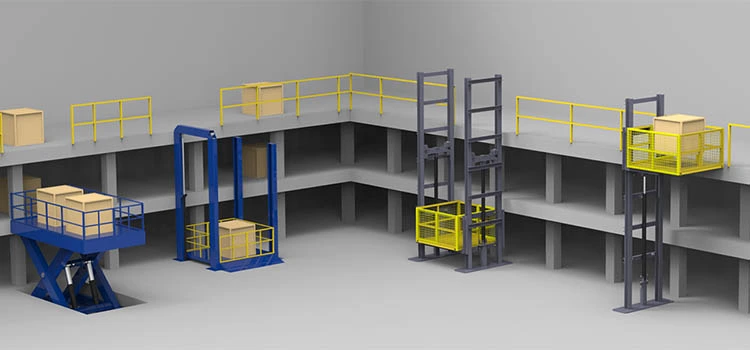We Maintain Lifts with Precision: Ensuring Safety And Security and Efficiency
We Maintain Lifts with Precision: Ensuring Safety And Security and Efficiency
Blog Article
Untangling the Intricacies of Lift Innovation: Troubleshooting Common Troubles Across Lift Designs
In the world of lift innovation, a myriad of details commonly lie underneath the surface area of what seems a straightforward system. From slow procedure issues to strange sounds originating from the equipment, troubleshooting typical problems across numerous lift designs requires a keen eye for detail and an organized method - repair and maintenance services. As we get started on this trip to untangle the complexities that can torment these essential devices, a much deeper understanding of the internal functions and possible risks of lift technology is essential. Keep tuned as we navigate with the labyrinth of lift malfunctions, seeking options to the enigmatic issues that can interfere with the smooth functioning of these important apparatuses.
Identifying Slow Operation Issues

Next, examine the electrical connections to make sure that all components are properly connected and operating. Defective electrical wiring or loose links can cause slow operation or full breakdown of the lift system. Additionally, it is vital to examine the control system to establish if the concern depends on the shows or sensing units.
If the visual evaluation and electric checks do not reveal the origin of the sluggish operation, additional diagnostic tests might be required. These can include pressure tests for hydraulic systems, voltage examinations for electric elements, or running diagnostic software application for the control system. repair and maintenance services. By following an organized strategy to fixing sluggish operation issues, you can successfully determine and fix the issue, making sure the lift operates securely and successfully
Resolving Strange Noises
To effectively fix lift modern technology for odd sounds, a detailed assessment of the lift elements adhering to the identification of sluggish operation concerns is important. Unusual sounds in lifts can be a sign of underlying problems that need timely focus to ensure the security and dependability of the system. Typical sources of strange noises in lifts include worn-out or misaligned pulley-blocks, harmed motor bearings, loose or broken suspension ropes, and malfunctioning control systems. When attending to weird sounds, it is vital to perform an organized assessment of these elements to determine the specific cause of the sound properly. This may entail looking for any type of visible indicators of wear and tear, testing the performance of electric motor bearings, tightening up loose links, and lubricating moving parts as required.
Moreover, it is vital to refer to the lift manufacturer's maintenance guidelines and seek assistance from certified specialists when dealing with complex lift parts or unknown troubleshooting treatments. By quickly settling and dealing with odd sounds underlying issues, lift drivers can ensure the ideal efficiency and safety and security of the lift system for guests and drivers.
Handling Faulty Control Issues
An efficient approach for look at more info addressing faulty control issues in lift modern technology entails carrying out a comprehensive assessment of the control system's elements and functionality. When experiencing issues with lift controls, it is essential to initial check for any kind of loose links, damaged circuitry, or malfunctioning sensors. Verifying that all control buttons, screens, and keypads are operating properly is likewise vital in diagnosing the problem properly.
If no visible concerns are obvious, technicians ought to proceed to examine the control panel for any type of signs of water corrosion, overheating, or damages, as these can typically lead to control breakdowns. Furthermore, resetting the control system or updating the software application may assist settle certain glitches or bugs triggering the trouble.

Tackling Hydraulic System Malfunctions
The effectiveness of hydraulic systems in lifts depends greatly on the proper performance of various elements within the system. When hydraulic systems malfunction in lifts, it can lead to functional disturbances and safety and security concerns.
One more constant hydraulic system malfunction is a loss of stress, which can arise from air going into the system, liquid contamination, or pump ineffectiveness. Service technicians can resolve this by bleeding the system to get rid of air, replacing polluted fluid, or servicing the pump as needed. Furthermore, abnormalities in hydraulic liquid degrees or uncommon sounds during lift procedure may suggest underlying system malfunctions that require prompt interest to avoid additional damages. Normal maintenance and timely troubleshooting of hydraulic system problems are essential to making certain the reliable and secure operation of lift innovation.
Taking Care Of Electric Part Failings
Resolving electrical part failures in lift modern technology necessitates an organized approach to detecting and dealing with issues to keep functional performance and safety criteria. When running into electrical issues in lift systems, it is important to click over here now initial conduct a detailed assessment of the electrical parts, including control panels, electrical wiring, sensors, and circuit card. Any signs of damage, corrosion, loose connections, or burned aspects need to be meticulously noted and addressed promptly to stop more issues.
In the situation of electric component failings, it is necessary to comply with supplier standards for repairing and repair service procedures. This might involve checking the elements making use of multimeters, oscilloscopes, or other diagnostic tools to pinpoint the specific source of the malfunction. Additionally, having a comprehensive understanding of the lift's electric schematics and circuitry layouts can help in identifying and correcting concerns efficiently.
Regular upkeep and inspection schedules can help stop electric failures by detecting prospective concerns at an early stage. Correct training for lift specialists on electric systems and elements is also vital to ensure accurate diagnosis and efficient resolution of electrical problems, eventually adding to the general safety and security and reliability of lift procedures.
Conclusion
In verdict, repairing lift innovation needs an organized strategy to identify and attend to typical troubles such as slow-moving operation, unusual noises, malfunctioning controls, hydraulic system malfunctions, and electric part failings. By comprehending the complexities of lift innovation and complying with correct fixing steps, service technicians like this can efficiently deal with problems and make certain the safe and reliable operation of lifts across numerous designs.
To properly troubleshoot lift modern technology for unusual sounds, a thorough exam of the lift elements following the identification of slow procedure issues is vital. Strange sounds in lifts can be indicative of underlying problems that require punctual focus to ensure the safety and dependability of the system.An effective strategy for attending to faulty control issues in lift modern technology entails conducting a thorough evaluation of the control system's components and functionality.The performance of hydraulic systems in lifts depends greatly on the proper performance of different components within the system. repair and maintenance services. When coming across electric troubles in lift systems, it is essential to very first perform a comprehensive assessment of the electrical elements, including control panels, circuitry, sensors, and circuit boards
Report this page